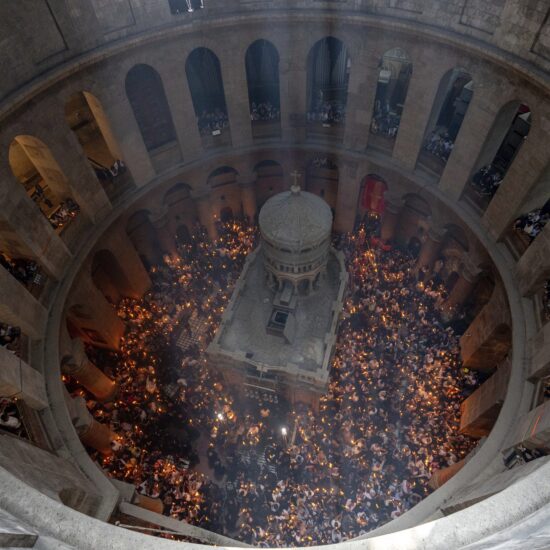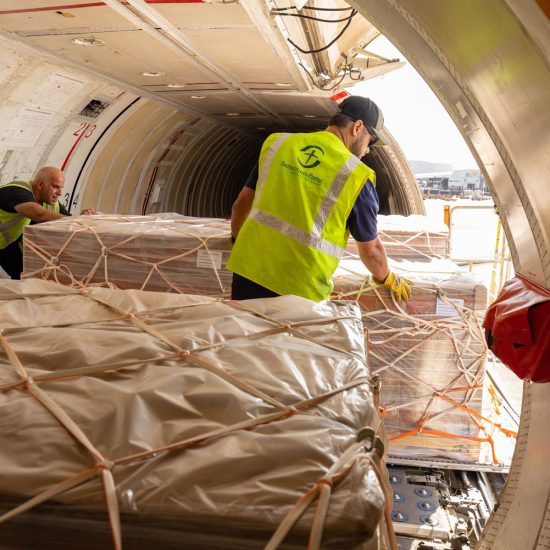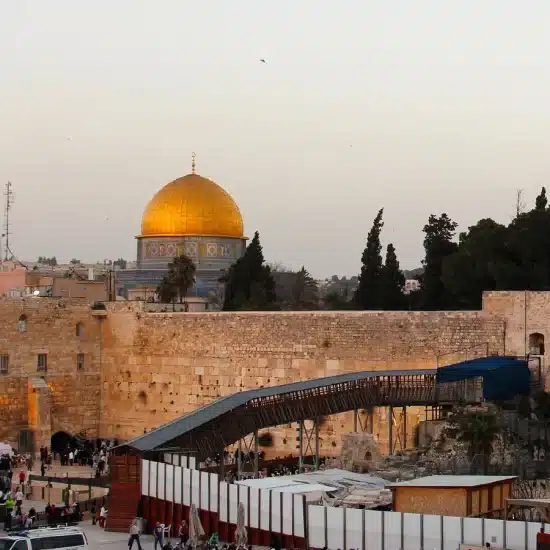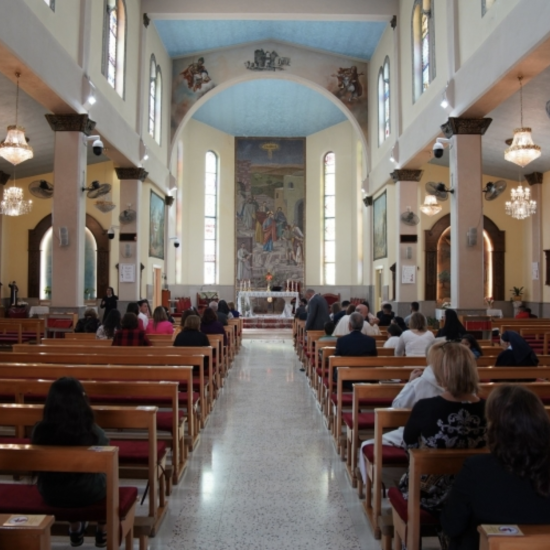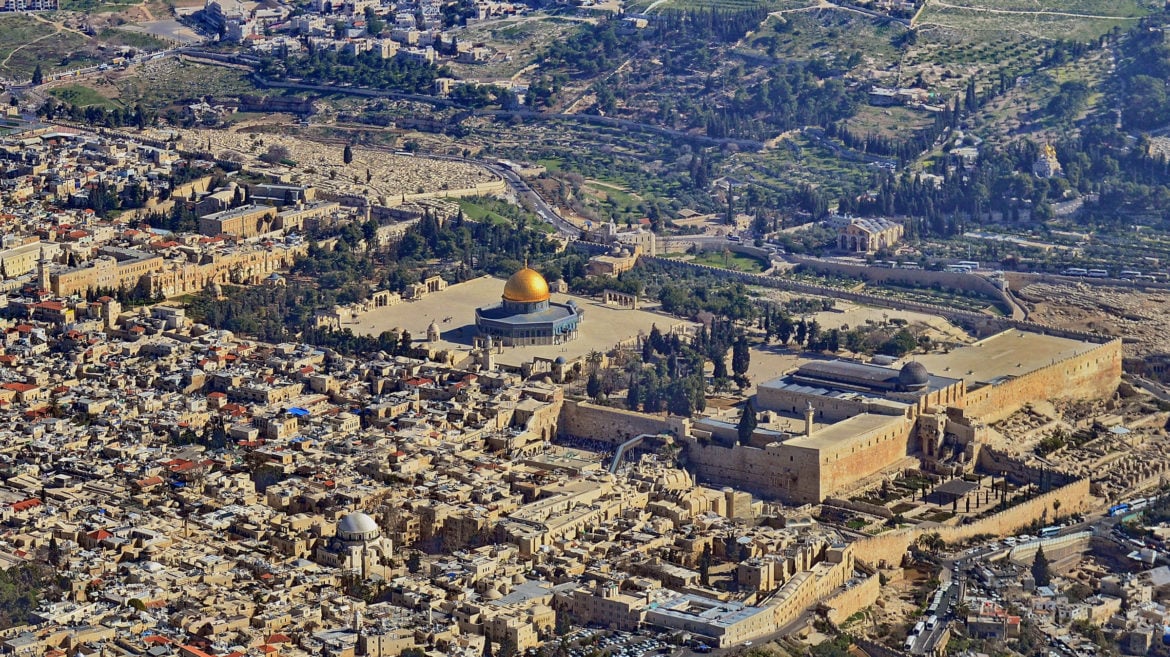
(RNS) — As tourism to Jerusalem rebounded from the pandemic last year, more than 2 million visitors came to see the Old City of Jerusalem’s gleaming stone walls and the attraction known as “the City of David,” and the large stone structure, standing opposite the Temple Mount, said to be the remnants of King David’s palace.
But a paper published in June in Tel Aviv, the journal of the Institute of Archaeology of Tel Aviv University, gives further credence to growing suspicions that David’s headquarters was located elsewhere.
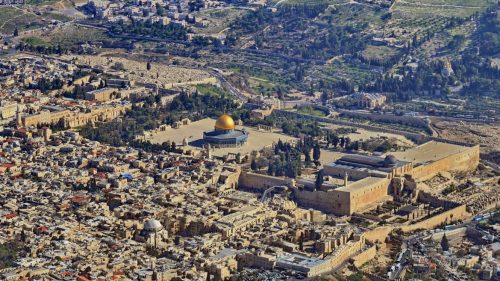
An aerial view of Jerusalem’s Old City and the Temple Mount. Photo by Avraham Graicer/Creative Commons
According to Nadav Na’aman, an Israeli archaeologist who’s been studying the region’s ancient history since the early 1960s, cuneiform tablets discovered in an area known as “the Ophel” at the base of the Mount suggest that the royal palace and historical core of the city was likely there.
The compound known as the City of David is popular among Jewish and Christian tourists alike, drawing more than 400,000 people every year. The site includes the Gihon Spring, where, according to Christian legend, the Virgin Mary washed Jesus’ swaddling clothes, and the Siloam Tunnel, built by the biblical king Hezekiah to supply the city with water while it was under siege by an Assyrian army in the eighth or seventh century B.C.E.
The iconic walls that ring today’s Old City are in fact of Ottoman construction, built by Sultan Suleiman the Magnificent in the 16th century.
In the biblical era, and the Middle Bronze Age period before it, the city had a very different footprint. Though it still incorporated the Temple Mount, much of what is today the Armenian and Christian quarters was outside its walls, while the city spilled down to the south into the valley that today makes up the largely Palestinian neighborhood of Silwan. There on a ridge is an archaeological site, first excavated in the 19th century, long identified as the core of the ancient city of Jerusalem.
It made a certain sense that David’s palace, the administrative and political center of the oldest iteration of the city, would stand opposite the Temple Mount, the center of the city’s religious hierarchy.
But many archaeologists have long felt that the evidence pointing to the City of David complex is far from conclusive. The question has become colloquially known as “the problem with Jerusalem” in the Israeli archaeological community.
“The ‘problem with Jerusalem’ is the location of its original ancient site,” Professor Israel Finkelstein, head of the School of Archaeology and Maritime Cultures at the University of Haifa, told Religion News Service. Most puzzling is that the structures on the “City of David” ridge do not have the characteristics of an ancient mound, the type of settlement structure that made up the earliest cities in the area in the Middle Bronze Age.
The location of the tablets reported last month by Na’aman, believed to be royal correspondence, suggest they fell further north.
“The discovery of the two tablet fragments in the Ophel area,” Na’aman argued in his paper, “has changed the balance of evidence. As observed above, the fragments indicate that the royal palace, from where they must have swept, was probably on the Temple Mount.”
In Na’aman’s thinking, the City of David would have been an outlying suburb in the early days of the city.
“This would account for the scanty architectural remains and the paucity of objects dated to the Late Bronze Age uncovered in the excavations conducted in the Southeastern Hill,” Na’aman wrote, referring to the City of David’s ridge. “According to this logic, the centre of the city at the time was located on the Temple Mount, north of the Southeastern Hill, with the latter having been a peripheral, poorly inhabited area in its vicinity.”
The lack of significant structural remains between the City of David and the Temple Mount from the earliest days of Jerusalem, he concluded, suggests a city in two parts.
“The picture that emerges from the discussion is perplexing. On the one hand, the Temple Mount, where the royal palace and temple were located, was probably the economic and administrative centre of the city as early as the second millennium BCE,” Na’aman wrote. “On the other hand, the fortifications that encompassed the Southeastern Hill formed a separate urban entity, detached from the Temple Mount.”
Still, it may be a long time before the matter is resolved. Any digging on the Temple Mount itself has been strictly forbidden amid the Israeli-Palestinian conflict. In the past, the suggestion of disturbing the site has been met with strong condemnations from Jewish and Muslim leaders alike.
“I can only speak about the current situation and the near future — I see no possibility to dig on the Temple Mount,” Finkelstein told RNS.


